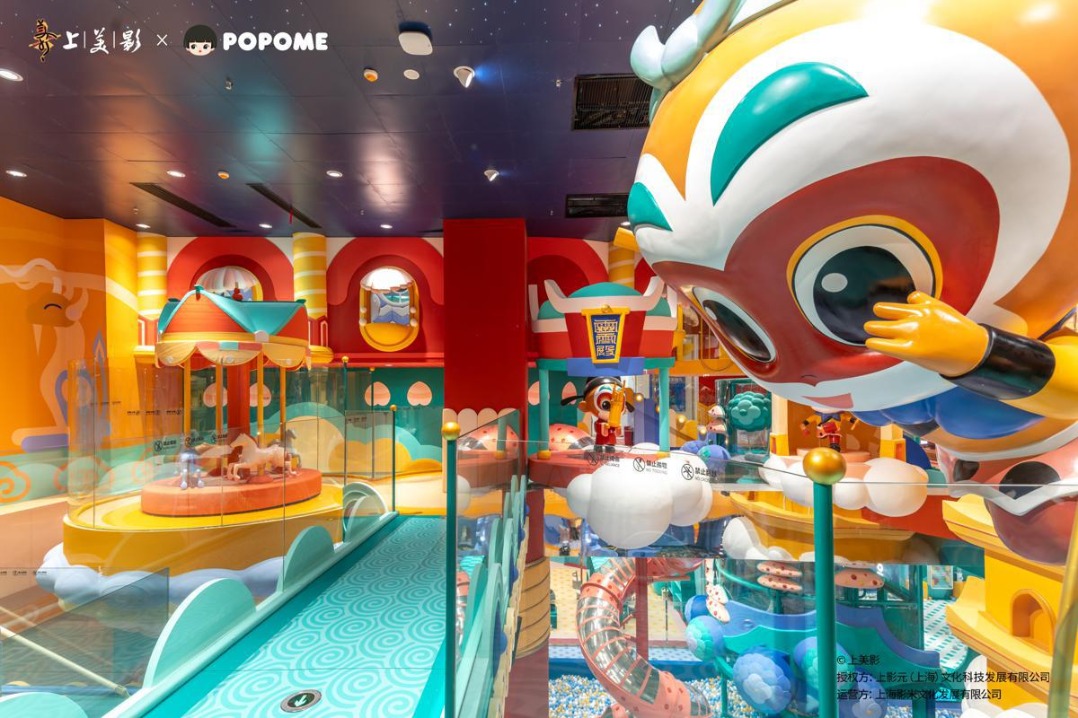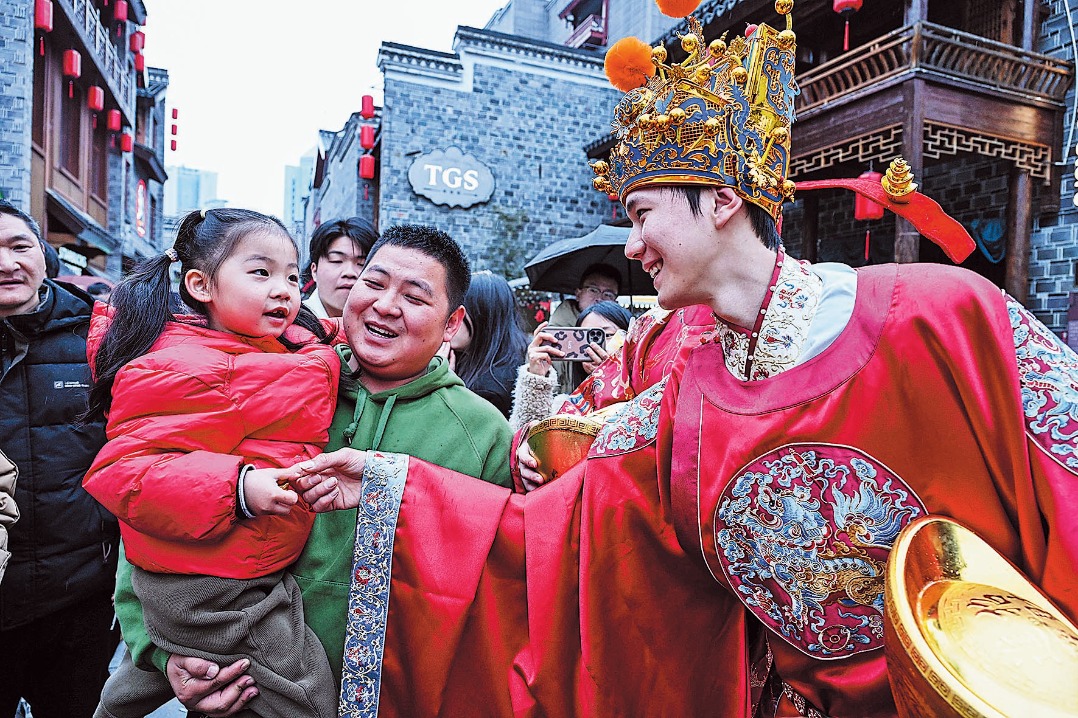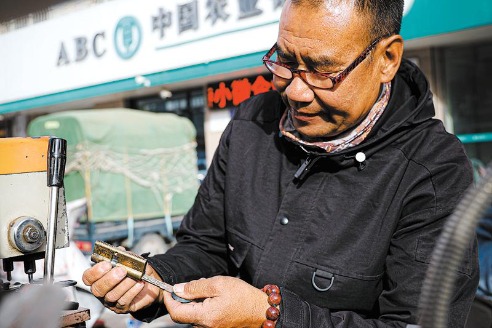Rule protects retelling of Red history
Revolutionary tourism sites to benefit from comprehensive development


This year marks the 80th anniversary of the victory in the Chinese People's War of Resistance Against Japanese Aggression (1931-45). During the recent five-day May Day holiday, a good many historical sites bearing the marks of China's revolutionary history were inundated with tourists.
Tourism destinations themed around revolution, often referred to as Red tourism sites, integrate educational exhibits with immersive experiences, leveraging innovative technologies to blend learning with leisure.
In Hunan province during the May Day holiday, there were 2.72 million visits to 60 Red tourism sites — a year-on-year increase of 21.8 percent. The surge reflects the public's enduring reverence for revolutionary legacy.
In China, revolutionary heritage sites are those that mark the Chinese people's fight for national revitalization after the outbreak of the Opium War in 1840, and the revolutionary sites of the Communist Party of China between the founding of the Party in 1921 and 1949, when New China was established.
In response to the evolving demand and to better harness the cultural, social and economic potential of Red tourism, the Ministry of Culture and Tourism in December last year issued the Classification of Integrated Red Tourism Development Zones — a new industry standard.
The standard offers guidance for improving site quality and enriching visitor experiences. It outlines 36 specific requirements across six key areas — governance, cultural preservation, integrated development, tourism services, safety and talent cultivation.
The standard is the first to highlight foundational guidance in organization and governance. It sets out three basic requirements, including clearly defined development entities, a delineated geographical scope, and the establishment of a comprehensive institutional framework.
It also proposes eight detailed requirements that focus on the protection and inheritance of Red culture, emphasizing the importance of showing the diversity and uniqueness of Red tourism resources, developing nationally influential and branded tourism products, and safeguarding revolutionary artifacts.
Interpretive content is encouraged to incorporate the histories of the CPC, New China, reform and opening-up, and socialist development. The standard also stresses the need for educational programming, preservation of historical ambience, and harmonized infrastructure that reflects the aesthetic of former revolutionary base areas.
To foster synergy among industries, the standard outlines eight criteria for integrated development. These include the formulation of master plans, the cultivation of diverse and complementary industries under a unified mechanism, and the use of modern technology to enhance visitor experiences.
Additional requirements call for the creation of large-scale revolution-themed performances, night tourism activities and cultural products. Economic performance indicators such as stable growth in tourism traffic, employment and revenue are also included.
These measures aim to ensure effective management and coordinated planning across designated Red tourism zones, experts said.
It offers a clear basis for the construction of integrated development zones to follow, heralding a fast track of standardized and regulated development, said Wang Zhanlong, a senior researcher at the Beijing-based New Era Culture and Tourism Research Institute.
These zones will become key tools for local governments to promote Red tourism and serve as prominent national brands of Red tourism destinations, Wang added.
"Red tourism will gradually evolve from a model centered around individual attractions to one focused on comprehensive tourism destinations, ultimately leading to the formation of a series of nationally influential Red tourism hubs," he said.
The standard also called for enhancing tourism services and accessibility, with nine specific measures to improve visitor experiences. These cover the provision of varied accommodations, dining, shopping and leisure services, as well as strong public transport links between core attractions.
The standard encourages the development of self-guided travel options, ample parking, well-marked signage systems, full Wi-Fi coverage and accessible infrastructure. Preferential policies are recommended for key groups, including young people, the elderly, people with disabilities, veterans and model workers.
After years of development under the unified planning and guidance of national policies, China has largely completed the construction of its Red tourism site system. A wide array of Red tourism attractions, such as museums, memorial halls, historical sites and former residences of revolutionary figures, are scattered across the country, with the number of Red tourism visitors increasing year by year, said an official from the resource development department of the Ministry of Culture and Tourism at an explanatory session for the release of the standard.
"The tourism destinations have composed an important platform for promoting culture surrounding revolutionary history, delivering patriotic education, driving economic transformation in old revolutionary base areas, and contributing to rural vitalization," the official said.
Integrated Red tourism development refers to building destination zones centered on Red tourism that coordinate various elements, such as tourism resources, related industries, ecological environments and public services, within a region, according to the ministry.
This approach mobilizes sectors such as education, agriculture, forestry, transportation and sports to create a comprehensive tourism benefit that attracts visitors, inspires them through the Red spirit, and encourages long-term engagement through diverse industries, it said.
This strategy will also encourage local governments to enhance industrial functions, extend value chains and transform Red resource advantages into industrial strengths, thereby improving the overall competitiveness and capacity of tourism destinations, the official said.
The country's Patriotic Education Law calls for the development of integrated Red tourism demonstration zones to leverage Red resources for education and to carry forward the patriotic spirit. The 14th five-year plan (2021-25) for tourism development proposed supporting revolutionary base areas in harnessing their unique tourism resources.
In 2022, the ministry issued guidelines for pilot programs on integrated Red tourism development, selecting 10 pilot sites and achieving notable results. Drawing on this experience, the ministry came up with the new standard, which came into effect in December.
"This is the country's first industry standard dedicated to Red tourism integration. It offers a practical roadmap for developing Red tourism integration zones and holds great significance in accelerating integration efforts, promoting deep cultural-tourism synergy, and driving the high-quality growth of the tourism sector," said Wu Ruoshan, council member of the Beijing Tourism Studies Association.
Today, Red tourism is entering a crucial phase of integration. Pilot programs across the country have begun to generate replicable and scalable models. However, as efforts shift from isolated demonstrations to widespread implementation, there is an urgent need for a standardized, national-level framework, he said.
"The release of this standard comes at the right time. It introduces, for the first time, a clear definition of a Red tourism integration zone, establishes grading criteria, and fills a long-standing gap in Red tourism development standards. It reflects both strong value orientation and practical guidance," he added.
The Ministry of Culture and Tourism said it will continue to promote and implement the newly released national standard. It will draft a scoring system and implementation plan to support the rollout of the standard nationwide.
"These tools will serve as a foundation for assessing and guiding local efforts in establishing integrated Red tourism development zones," the official from the ministry said.
It will commission third-party evaluations of 10 pilot units and promote the successful experiences of these pilot regions.
"By sharing best practices and lessons learned, we hope to guide other areas in adopting a scientific and standardized approach to red tourism integration," the official added.
- Rule protects retelling of Red history
- Nation's badminton boom sends shuttlecock prices soaring
- Xi: China, Belarus true friends
- Mainland rips DPP for threatening summit attendees
- Sichuan health authorities propose extending marriage leave to 20 days
- Postal and express delivery services handle over 1.5b parcels during holiday





































